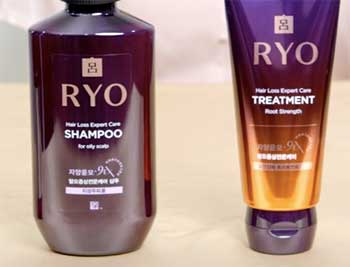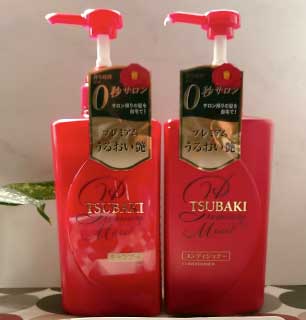Japanese shampoos have become incredibly popular in recent years, and for good reason. Brands like Tsubaki and Ryo use high quality ingredients and advanced formulas to cleanse and nourish hair.
But with so many options on the market, how do you choose the right shampoo for your hair type and concerns?
We break down the key differences between two of the top Japanese shampoo brands, Tsubaki and Ryo, to help you decide.
A Brief Comparison Table
| Category | Tsubaki | Ryo |
| Key ingredient | Camellia oil | Herbal extracts like ginseng |
| Benefits | Nourishment, moisture, protection | Scalp stimulation, cleansing |
| Best for | All hair types, especially dry or damaged | Oily scalp, dandruff, hair loss |
| Formulas | For moisture, smoothness, anti-aging | For volume, growth, cleansing |
| Price | $15-$25 per bottle | $25-$35 per bottle |
| Availability | Drugstores, mass retailers | Salons, beauty specialty stores |
Overview of Tsubaki and Ryo

Tsubaki and Ryo shampoos are both produced by major Japanese beauty companies Shiseido and Kao respectively.
They use botanical ingredients like camellia oil along with technology like amino acid blends to offer personalized hair care.
Tsubaki prides itself on camellia oil, an ingredient used for centuries in Japanese hair rituals.
Camellia oil deeply nourishes hair and protects against damage from UV rays and pollution.
Tsubaki uses different formulations of camellia oil in their products for different hair types.
Ryo focuses on using ancient herbs and modern technology to repair hair. Their products contain ginseng and cinnamon extracts along with amino acid formulas. They have a range of shampoos for concerns like hair loss, volume, and scalp care.
Key Differences Between Tsubaki And Ryo shampoo
Now let’s get into the details of how these brands compare.
- Cleansing Power
Both Tsubaki and Ryo shampoos produce a rich lather that rinses clean without stripping oils. They use mild detergents like sodium laureth sulfate along with cocoamphoacetate to lift dirt and buildup without over-drying the hair and scalp.
Tsubaki uses camellia oil to add moisture to the lather. Ryo relies on botanical oils like argan and olive oil for a smooth, hydrated cleanse. Those with very oily hair and roots may find that Ryo provides a slightly deeper clarifying effect.
When it comes to cleansing power, Tsubaki and Ryo are evenly matched. Those with normal to dry hair will benefit from the extra moisture of Tsubaki, while oilier hair may favor Ryo for a fresher feel.
- Ingredients and Formulations
The biggest difference between Tsubaki and Ryo lies in their specialized ingredient blends.

Tsubaki uses camellia oil as the star of its formulations.
Camellia is rich in antioxidants like oleic acid to nourish hair and protect from environmental damage.
Tsubaki combines this Camellia oil with ingredients like rice bran oil, argan oil, or keratin depending on the hair needs the product is formulated for.
For example, the Tsubaki Extra Moist Shampoo contains camellia oil along with baobab oil to hydrate dry, brittle hair.
The Tsubaki Ageless Shampoo has camellia oil and silk protein to prevent split ends and reduce frizz in mature hair.
Ryo also uses botanical oils but focuses more on herbal extracts. Ginseng, cinnamon, and red pepper provide antioxidants and circulation to stimulate the scalp and hair follicles.
The ingredients target concerns like hair loss and thinning by supporting healthy growth.
The Ryo Hair Strengthening Shampoo includes ginseng with biotin, cysteine, and B vitamins to fortify weak, brittle strands. The Ryo Scalp Deep Clean Shampoo uses cinnamon and salicylic acid to calm itchiness and remove product buildup.
Those looking for targeted solutions for specific hair issues may prefer Ryo’s range of formulas with active scalp and hair ingredients. Tsubaki offers more generalized hair care with camellia oil at the core.
- Hair Types
Tsubaki and Ryo can both work for most hair types, but some key differences give each brand an advantage for different needs.
Tsubaki offers options for normal, dry, damaged, and colored hair. The camellia oil provides hydration and protection without weighing hair down. This makes Tsubaki a great choice for those with thin, limp hair that needs moisture without added weight.
Ryo has more formulas for oily scalp, hair loss, dandruff, and specific textures. Ginseng and cinnamon provide circulation and purifying properties to treat oily hair and scalp issues. The targeted formulas also aid those with thinning or frizzy hair.
Both brands offer volume shampoos to add body for flat, fine hair. However Tsubaki’s camellia oil is less likely to weigh down finer hair than Ryo’s rich botanical oils.
For damaged, overprocessed hair, Tsubaki’s camellia oil formulas offer intense nourishment. Ryo’s scalp purifying shampoos can help with dandruff and itchiness.
- Price and Availability
Tsubaki shampoos are a bit more accessible and affordable than Ryo. Tsubaki products can be found at drugstores for around $15-$25 per bottle. Ryo is primarily available at salons and specialty retailers for $25-$35 per bottle.
Tsubaki also offers value sets of shampoo with related conditioner and hair masks for under $50. Ryo tends to sell its products individually.
If price is a concern, Tsubaki provides excellent quality at lower prices than the salon brand Ryo. Tsubaki may also be easier to find at mass retailers compared to Ryo’s more selective distribution.
Frequently Asked Questions (FAQ)
Yes, Tsubaki shampoo is excellent for hair. Its key ingredient, camellia oil, provides intense nourishment. Camellia oil protects hair from UV and pollution damage thanks to antioxidants like oleic acid. Using Tsubaki shampoo leaves hair soft, smooth, and hydrated without weighing it down.
Tsubaki shampoo can help strengthen hair against breakage and thinning when used in conjunction with other treatments. However, it does not contain active ingredients that directly target hair regrowth. Those with significant hair loss issues may want to look into specialized formulas like Ryo shampoo.
Tsubaki and Ryo are two of the most popular shampoo brands used in Japan. Japanese women also frequently use shampoos and treatments from the brands Ichikami, Pitera, and Kracie. These shampoos focus on natural botanical ingredients to gently cleanse and nourish hair.
Many Japanese girls and women use Tsubaki shampoo for its camellia oil formula that leaves hair moisturized and manageable. Teens also enjoy fun, colorful shampoos from brands like Dear Beaute and Honey Cacao. Popular ingredients in shampoos for younger Japanese girls include honey, silk protein, argan oil, and rice water for soft, healthy hair.
Final Thoughts
Both Tsubaki and Ryo make excellent Japanese shampoos using high quality ingredients. Here’s our quick take:
- Tsubaki is ideal for those seeking everyday nourishment and moisture for all hair types. Its camellia oil formula leaves hair soft and manageable.
- Ryo offers more targeted solutions with its scalp and hair strengthening herbal ingredients. It’s great for specific needs like hair loss, oily scalp, dandruff, or damaged hair.
- Tsubaki provides better value and accessibility. Ryo is pricier but offers salon quality results.
No matter which you choose, Japanese shampoos like Tsubaki and Ryo will leave your hair looking healthy, soft, and shiny. Listen to your hair’s needs and try one of these amazing formulas.

